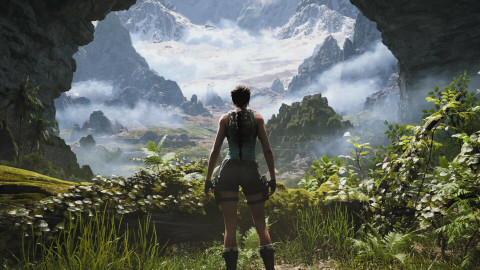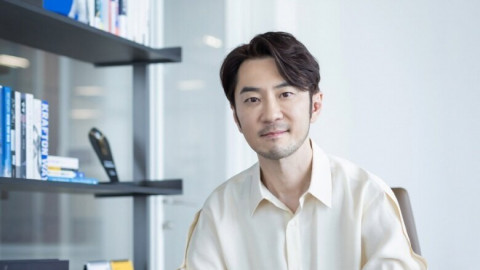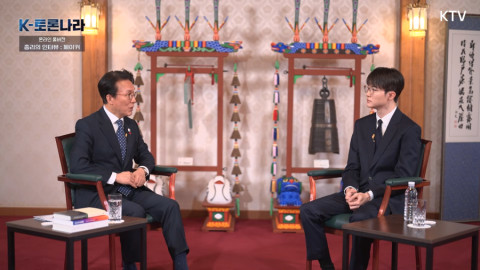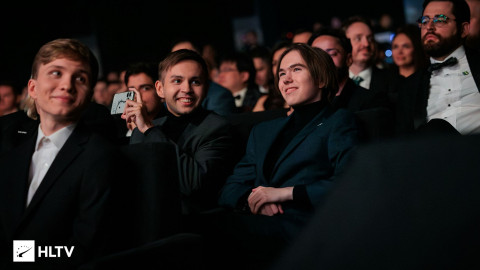
Nearly 35 years ago, Ryu and Ken stepped onto the stage in the first Street Fighter. Since then, their rivalry and the world around them has grown, encompassing electric beasts from Brazil, elastic yoga masters, and over one hundred other playable characters.
Yet no matter how the game grew, each game built upon the last, never feeling out of place in the Street Fighter universe.
A large portion of this success is the design behind the game, bringing familiar faces into new aesthetics and pushing design into new and exciting realms. Now in its fifth season, Street Fighter V is bringing back several familiar faces. Dan, the self-taught martial artist, arrived to the game in February. The fortune-teller Rose and immortal hermit Oro have both appeared in illustrated cutscenes for SFV but will make their playable appearances later this year along with Rival School’s Akira.
To talk us through the process of bringing these characters into the newest iteration of the series, Takayuki Nakayama (Director of Street Fighter V) sat down to answer some of our questions.
InvenCulture: Thank you for chatting with us! For those who may not know you, please go ahead and introduce yourself.
My name is Takayuki Nakayama and I’m the Director of the Street Fighter V series. I’ve been involved with Street Fighter as a developer for nine years and 30 years as a player.
What is your favorite part of working on a legendary series like Street Fighter?
I love incorporating information from the past creators to give more background to characters that haven’t been revealed yet. My goal is to get players to learn new and unusual aspects of the characters in order to make them feel more attached to them.
What is the process when bringing characters into a game like Street Fighter V? What challenges do you face when having characters return?
We decide on the characters based on their move structure and strategy, and also take into account their personality and origin to ensure there’s a good balance from a holistic perspective. Afterward, we research to see how those characters were played in past titles and what aspects were enjoyed by those players. We review footage of past matches and research on that particular character’s movements to see what was favored.
Simultaneously, we try to think about their position within this title’s story along with how they can connect to the story of past and future titles. Doing all this allows us to eventually reach a design that’s right for this title.
In terms of expression and presentation, we also look at what wasn’t possible previously or with 2D titles in general and try to come up with ways to do so. Since the characters are displayed largely, we also work closely on the texture of the clothing and other accessories/decoration to increase the amount of detail overall.

For Dan and Rose — who we last saw in Street Fighter IV — how did they evolve when brought into Street Fighter V?
Both characters were created with the designs from the Alpha series in mind. For Rose, the way her scarf is wrapped is different from her design in SFIV and we actually redid her design because the Art Director felt strongly about this. It was a challenge to maintain the animation from when she attacks and then goes back to her neutral position while keeping the same silhouette as her Alpha version.
When working on a funny character like Dan, how do you get to explore his personality in his design?
The challenge for Dan was recreating his standard outfit for modern times. We put in a lot of effort into his facial expressions, prepared animations of him crying, and even created unique effects that appear when he’s performing certain moves like his Legendary Taunt.
For his other costumes, we made sure they were designs that embody his background story and his personality to their full potential. There are themes that are tied to his character stories involving Blanka and Sakura, as well as images that are fashioned out of his deceased father, Gou Hibiki, which players of past titles might catch on to.
As a character’s kit and mechanics change, how do you integrate that visually?
In the case of Rose, since her apprentice, Menat, is already in the game, we wanted her to be more dignified and have an air of coolness. Her previous anti-air, “Soul Throw,” where she jumps to grab the opponent in the air, has been replaced with “Soul Bind,” which grabs the opponent from the ground using her scarf.
Even in past titles, she was a fortune-teller who was proficient with using tarot cards, so in order to emphasize that element, we utilized them in her moveset and her victory pose. We paid close attention to her movements and made sure they are graceful and relaxed, and also made sure her scarf animates closely with her own movements.
How is design affected, knowing that you’re working with mo-cap actors? What advantages and limitations does that bring?
The data from the mo-cap sessions aren’t used as is and are ultimately modified for the game. The actors that support us are professionals when it comes to action, so they are capable of giving us suggestions that give us plenty of info and make the movements more beautiful and powerful, like for the animations of returning to the character’s neutral state after performing an attack.
On set, the actors and animation lead have discussions to come up with the foundation of a move, and having various opinions and suggestions being made in a session-like environment ultimately improves the quality of the animations.
Also, we often get martial arts professionals to come to the set which is significantly helpful when it comes to the development staff gaining more knowledge. Since there are also moves that a regular human can’t do, we also utilize wires to act them out or break down the moves when capturing these.
What sort of freedoms do you find when working on alternate looks for the characters (Costumes/Story looks/etc)?
In general, there are no limitations. We try to be cautious about areas that might be difficult to see during a match or hit boxes that are hard to tell (despite this, some costumes still get tournament bans so sorry for this). We come up with a theme each time and we try to imagine the types of costumes a character might have before designing them.

What is it like bringing characters like Oro from 2D into 3D? Is that more challenging or freeing than bringing a character from SF:IV to V?
The level of difficulty is high. Since there are fans of the past titles, we are very cautious when it comes to recreating past characters. Oro is a character with quite a difficult limitation for a 3D fighting game, as he only fights with one arm.
However, the dev team showed they really wanted to take that challenge on. They were able to pull through with the crazy idea of holding a pet turtle as a gimmick to restrain one of his arms, and I’m super grateful they were able to accomplish this.
In terms of characters that appeared in SFIV, they are also built from scratch so it doesn’t make a big difference whether they’re a recurring or a new character.
When working with cross-over characters like Akira into the Street Fighter universe, how do you balance both of their game universes?
In the case of Akira, since her original title, Rival Schools: United by Fate is also connected to the SF universe, it wasn’t too difficult. It was a lot of fun incorporating elements that fans of Rival Schools would appreciate.

What has been the most fun part of bringing these new additions to the roster for you?
This is a title that’s been running for five years and had up to 40 characters, so we were able to challenge ourselves by creating bold concepts for each new character and new experiences that existing players can enjoy.
Each of these characters is popular and having these beloved characters make an appearance is something we have to be mindful about but is simultaneously very exciting from a creator’s perspective. That’s because we are also huge fans of these new characters.
We were thrilled to get to chat with Takayuki Nakayama, and appreciate their time and insight on our favorite fighting game series.
Sort by:
Comments :0






